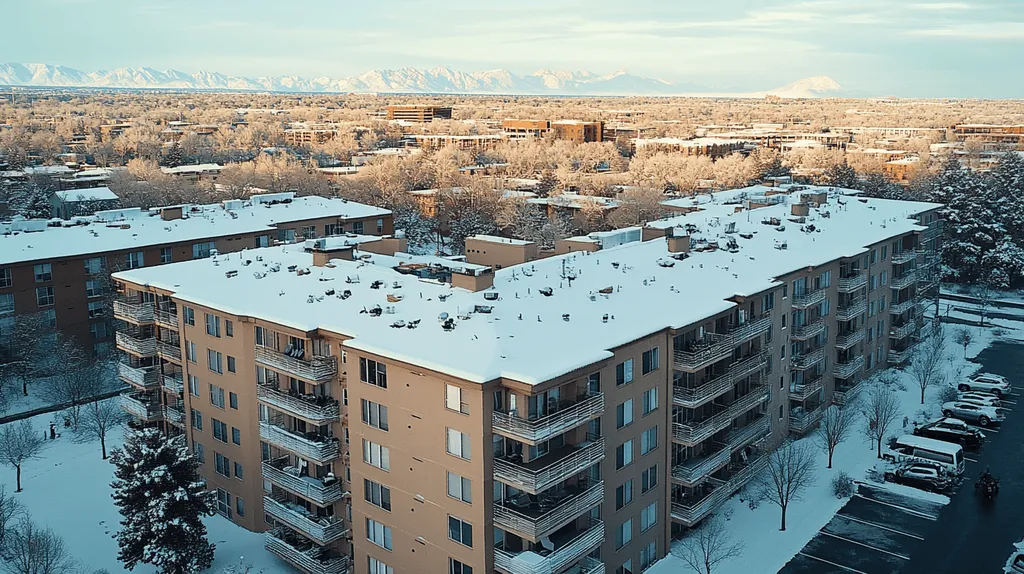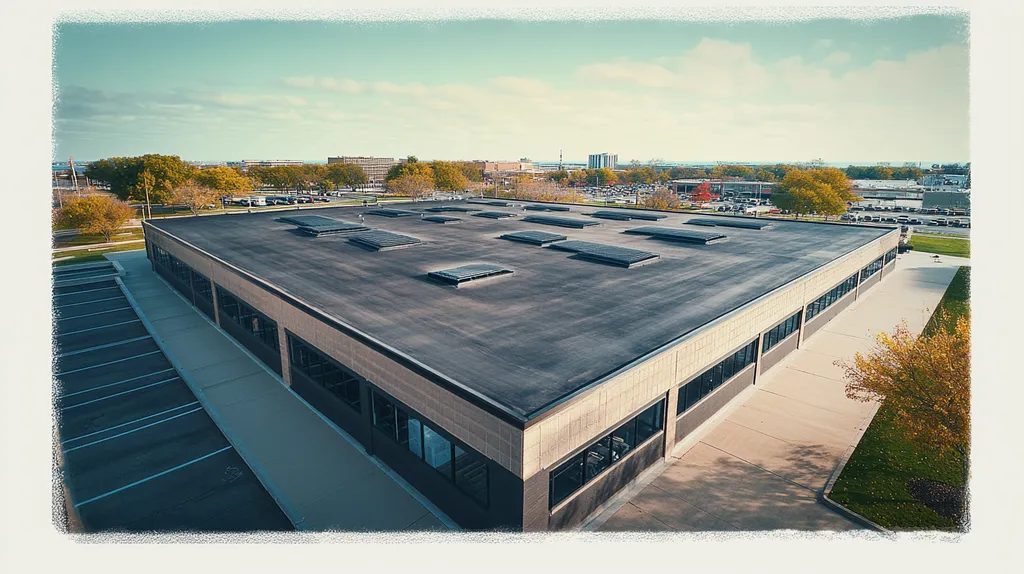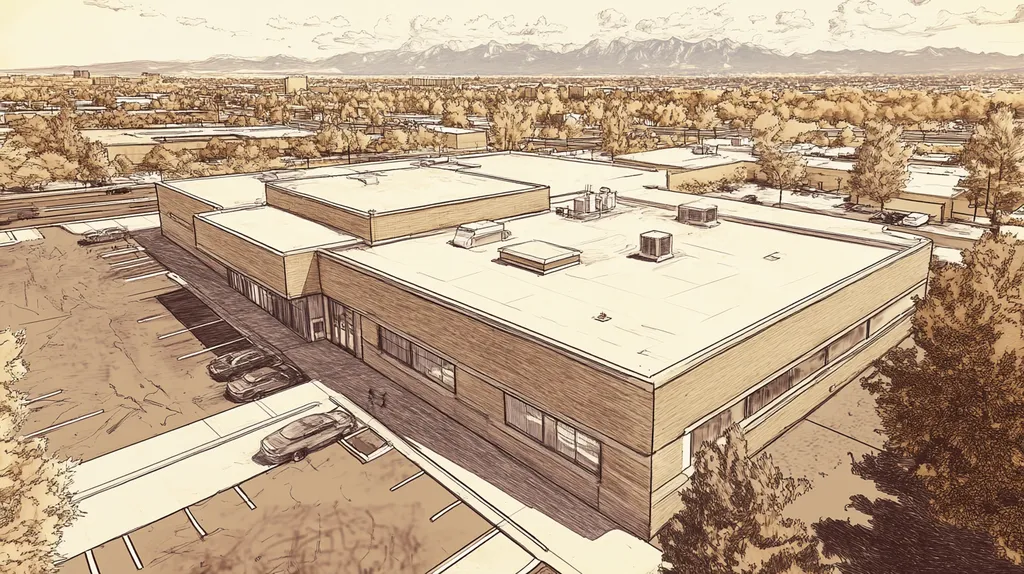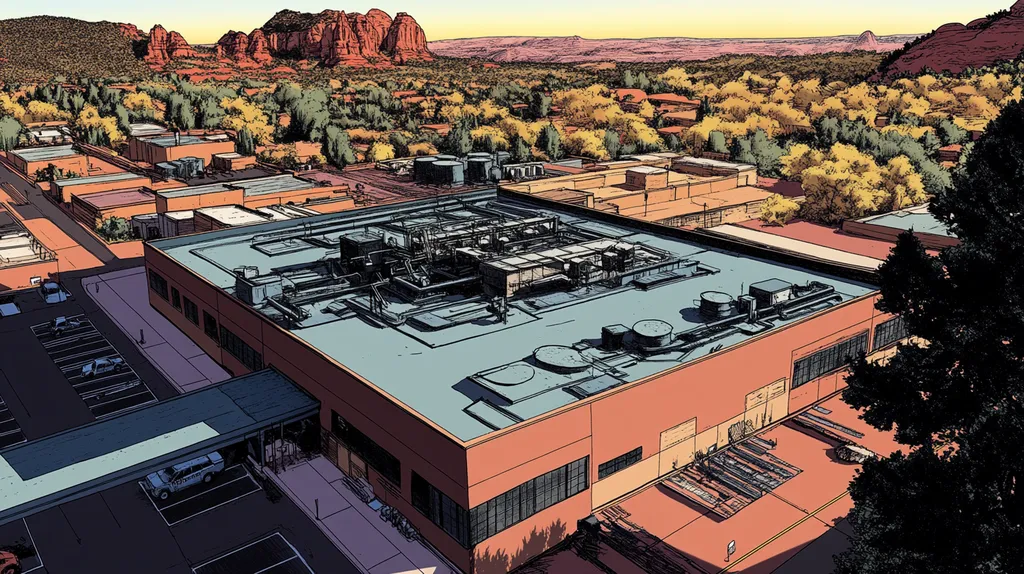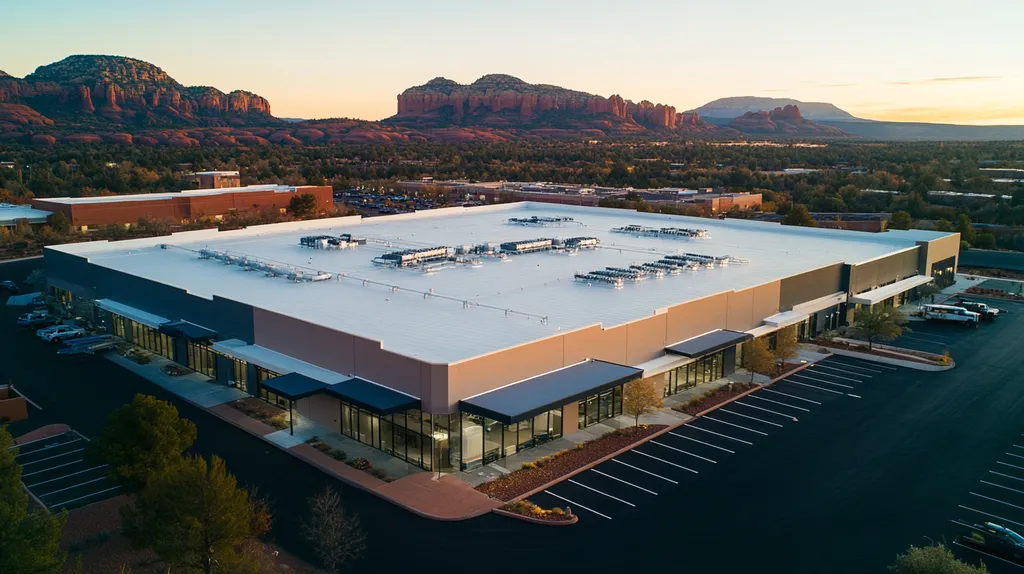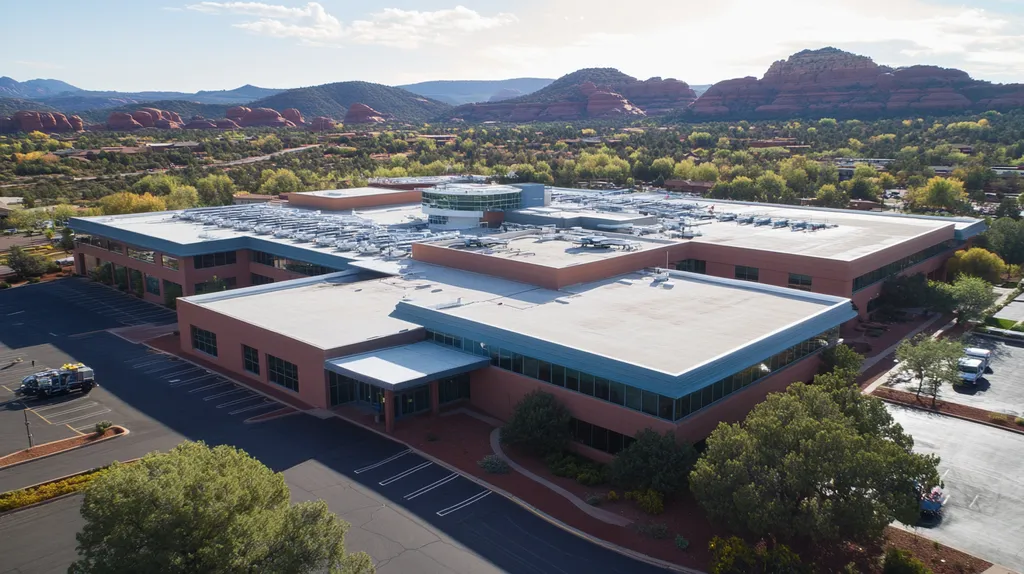Welcome to today’s Battle Royale featuring two roofing heavyweights: “Rooftop Units” in the east corner versus “VRF Systems” in the west!
Tonight’s showdown pits these contenders against each other across six punishing rounds designed to test every aspect of their performance for HVAC Solutions for Commercial Roofs.
At stake? Millions in potential costs, decades of building protection, and the critical performance demands of modern commercial and industrial facilities.
Our professional judging panel will evaluate each round on technical merit, real-world performance, and value delivery. After all six rounds, we’ll declare our ultimate champion.
Ladies and gentlemen, facility managers and building owners… it’s time to rumble!
ROUND 1: INITIAL COSTS & INSTALLATION
The choice between rooftop units and VRF systems represents a critical investment decision for commercial property owners. With HVAC systems accounting for up to 40% of building energy consumption, selecting the right system impacts both immediate costs and long-term operational efficiency. Understanding the initial investment and installation requirements is crucial for making an informed decision.
Material Expenses
Commercial rooftop units typically require lower upfront material investments, making them an attractive option for budget-conscious projects. Their packaged design incorporates all necessary components in a single unit, reducing the number of parts needed for installation.
Modern rooftop units feature advanced components and technology that balance initial costs with energy efficiency, offering a compelling value proposition for commercial buildings. (source: Countryside Heating & Cooling Solutions)
VRF systems command premium pricing due to their sophisticated technology and multiple components. While these materials offer superior performance, they can cost 20-30% more than comparable rooftop units.
For material expenses, rooftop units hold a clear ADVANTAGE due to their lower initial investment requirements.
Installation Complexity
Rooftop units excel in installation simplicity, typically requiring only basic structural support and standard utility connections. Their all-in-one design minimizes the number of connection points and reduces potential installation errors.
The streamlined installation process of rooftop units often requires fewer specialized technicians and less coordination between trades. This simplification can reduce labor costs by up to 25% compared to more complex systems.
VRF systems demand precise installation techniques and specialized expertise. The complex network of refrigerant lines, multiple indoor units, and sophisticated controls requires more time and skilled labor to install correctly.
Given these factors, rooftop units gain another ADVANTAGE in installation complexity.
Project Timeline
Project timelines significantly impact business operations and overall costs. Rooftop unit installations typically complete within 3-5 days, minimizing disruption to building occupants.
The straightforward nature of rooftop unit installation allows for better schedule predictability. Weather delays have less impact since most connections are made on the roof, reducing interior disruption.
VRF system installations generally require 7-10 days due to their distributed nature and multiple components. The extended timeline increases both direct costs and potential business disruption.
The shorter project duration gives rooftop units the ADVANTAGE in timeline considerations.
ROUND 1 WINNER: Rooftop Units
ROUND 2: DURABILITY & LIFESPAN
In commercial HVAC systems, durability and lifespan directly impact a building’s operational costs and long-term viability. With replacement costs ranging from $15,000 to $100,000 per unit, choosing between rooftop units and VRF systems becomes a critical decision that affects decades of building performance.
Recent industry data shows that premature HVAC failures can increase annual operating costs by up to 30%, making system longevity a key factor in overall building economics.
Weather Resistance
Rooftop units face direct exposure to extreme weather conditions, UV radiation, and temperature fluctuations. Their sealed cabinet design provides basic protection, but constant environmental stress can accelerate wear on external components.
Regular maintenance can extend rooftop unit lifespans to 15-20 years, though harsh climates may reduce this significantly. External components like condenser coils remain vulnerable to environmental damage.
VRF systems benefit from protected indoor placement of critical components, shielding them from direct weather exposure. Only the condensing units face outdoor conditions, while the majority of the system operates in controlled environments.
For weather resistance, VRF systems gain an ADVANTAGE due to better protection of vital components.
Component Longevity
Rooftop units typically employ robust, simple components designed for reliability. Their standardized parts are readily available and can be replaced individually as needed.
However, the all-in-one design means that failure of one component often affects the entire system’s operation. This can lead to more frequent system-wide disruptions.
VRF systems utilize advanced electronic components and variable-speed technology. Their modular design allows for independent operation of different zones, minimizing the impact of individual component failures.
The superior component protection and redundancy gives VRF systems the ADVANTAGE in this category.
Maintenance Requirements
Rooftop units are relatively easy to install and maintain, with straightforward access to all components from a single location. Their modular design allows for additional units as building needs grow.
Regular maintenance tasks can be performed quickly, though the exposed location can make winter servicing challenging. Units require consistent attention to prevent rust and corrosion issues.
VRF systems demand less frequent maintenance due to their protected placement and fewer moving parts. Their sophisticated monitoring systems can predict potential failures before they occur.
VRF systems secure another ADVANTAGE through reduced maintenance needs and better predictive capabilities. (source: Comfort Systems of MT)
ROUND 2 WINNER: VRF Systems
ROUND 3: PERFORMANCE FACTORS
In today’s competitive commercial real estate market, HVAC performance directly impacts both operating costs and tenant satisfaction. With energy costs rising annually and sustainability requirements becoming stricter, choosing between rooftop units and VRF systems has never been more critical.
Modern HVAC systems must balance multiple performance factors including energy consumption, adaptability to varying loads, and maintenance requirements. These factors can mean the difference between a profitable property and one that drains resources.
Energy Efficiency
Energy efficiency remains the primary driver of HVAC operating costs, with direct impact on monthly expenses and environmental compliance. Modern systems must deliver consistent performance while minimizing energy waste.
Rooftop units typically operate at fixed speeds, which can result in higher energy consumption during partial load conditions. Even with modern controls, these systems struggle to match varying demand without cycling on and off frequently.
VRF systems excel in energy efficiency through variable-speed operation and precise load matching. Their ability to transfer heat between zones and modulate capacity results in significant energy savings.
For energy efficiency, VRF systems claim a clear ADVANTAGE.
Load Management
Commercial buildings face constantly changing heating and cooling demands throughout the day. Effective load management ensures comfort while preventing energy waste.
Rooftop units handle varying loads through staged operation, which can lead to temperature swings and inconsistent comfort levels. Their all-or-nothing approach limits fine-tuning capabilities.
VRF systems provide superior load matching through continuous modulation and simultaneous heating and cooling capabilities. This allows for precise temperature control in multiple zones without compromising efficiency.
The superior load management capabilities give VRF systems another ADVANTAGE.
System Response
Commercial rooftop HVAC units offer straightforward operation with consolidated components that simplify monitoring and adjustment. Their packaged design allows for quick response to basic temperature changes.
However, these units can struggle with rapid adjustments to varying conditions, often requiring complete system cycles. This limitation can impact both comfort and energy efficiency.
VRF systems provide rapid response through sophisticated controls and variable operation. Their ability to adjust capacity instantly maintains precise temperature control while optimizing energy use. (source: Countryside Heating & Cooling Solutions)
VRF systems secure the ADVANTAGE in system response capabilities.
ROUND 3 WINNER: VRF Systems
ROUND 4: MAINTENANCE REQUIREMENTS
In commercial buildings, HVAC maintenance directly impacts operational costs, energy efficiency, and tenant satisfaction. With system downtime potentially costing businesses thousands per day, choosing between rooftop units and VRF systems requires careful consideration of ongoing maintenance demands and associated costs.
Recent industry data shows that properly maintained HVAC systems can reduce energy consumption by up to 40% while extending equipment life by 5-10 years. Understanding these maintenance requirements helps property owners make informed decisions that affect long-term operational success.
Routine Service Requirements
Rooftop units require regular maintenance checks every three to six months, focusing on filter changes, belt inspections, and coil cleaning. Their consolidated design means all components can be serviced during a single roof visit, streamlining the maintenance process.
The exposed location of rooftop units necessitates more frequent inspections for weather-related damage and debris accumulation. However, their straightforward design allows most maintenance tasks to be completed by general HVAC technicians.
VRF systems typically need less frequent routine maintenance due to fewer mechanical components and sophisticated self-monitoring capabilities. However, when service is required, it demands specialized technicians with specific system certification.
For routine service requirements, rooftop units gain an ADVANTAGE due to their accessibility and simpler maintenance protocols.
Technical Expertise Needed
Rooftop unit maintenance can be performed by most qualified HVAC technicians, as these systems use standardized components and conventional technology. This wider availability of qualified service providers helps control maintenance costs.
The conventional design of rooftop units means replacement parts are readily available and technicians can diagnose issues quickly. Most maintenance procedures follow standard industry protocols that are well-documented.
VRF systems require specialized training and certification for maintenance personnel. The complex electronics and proprietary technology limit the pool of qualified technicians, potentially increasing service costs and response times.
Rooftop units secure another ADVANTAGE in technical expertise requirements.
System Monitoring
Rooftop units traditionally rely on basic monitoring systems that track temperature and basic operational parameters. While functional, these systems may miss early warning signs of potential failures.
Modern rooftop units increasingly incorporate smart sensors and diagnostic capabilities, but they still lag behind more advanced systems in predictive maintenance capabilities.
VRF systems excel in system monitoring with sophisticated sensors and advanced diagnostic tools that can predict potential issues before they cause failures. Their integrated monitoring systems provide detailed performance data and maintenance alerts.
VRF systems claim the ADVANTAGE in system monitoring capabilities.
ROUND 4 WINNER: Rooftop Units
ROUND 5: SUSTAINABILITY CREDENTIALS
In today’s environmentally conscious market, HVAC sustainability credentials directly impact property values and operating costs. With increasing pressure from regulations and tenant demands, commercial buildings must demonstrate measurable environmental responsibility. The choice between rooftop units and VRF systems can mean the difference between meeting green building standards or falling short of sustainability goals.
Energy Efficiency
Modern HVAC systems must demonstrate exceptional energy efficiency to meet increasingly stringent environmental standards. This efficiency directly impacts both operational costs and environmental compliance.
Rooftop units operate with relatively simple on-off cycles, leading to energy consumption peaks and valleys. Even with modern controls, these systems struggle to maintain optimal efficiency during partial load conditions.
VRF systems excel through precise load matching and heat recovery capabilities. Their ability to transfer excess heat between zones and modulate output continuously results in significantly lower energy consumption.
For energy efficiency metrics, VRF systems claim a clear ADVANTAGE.
Environmental Impact
The environmental footprint of HVAC systems extends beyond energy consumption to include refrigerant management and material sustainability. Commercial buildings must carefully consider these factors to meet green building certifications.
Rooftop units typically use traditional refrigerants and require larger quantities due to their centralized design. Their exposed location can lead to increased refrigerant leakage risks over time.
VRF systems utilize advanced refrigerant management and often require less overall refrigerant volume. Their sealed systems and sophisticated leak detection capabilities minimize environmental impact.
VRF systems secure another ADVANTAGE in environmental impact.
Sustainable Integration
Commercial rooftop HVAC units provide straightforward integration with building management systems, allowing for basic energy monitoring and control. Their standardized design facilitates connection to renewable energy sources.
However, these units offer limited flexibility in adapting to advanced sustainability features like heat recovery or zone-specific optimization. This can restrict a building’s ability to achieve higher sustainability ratings.
VRF systems offer superior integration capabilities with smart building technologies and renewable energy systems. Their sophisticated controls enable optimal resource utilization and support advanced green building strategies.
VRF systems earn the ADVANTAGE in sustainable integration capabilities.
ROUND 5 WINNER: VRF SYSTEMS
ROUND 6: SPECIALIZED APPLICATIONS
Modern commercial buildings present unique HVAC challenges that standard solutions often fail to address. With specialized applications accounting for over 40% of commercial HVAC installations, choosing between rooftop units and VRF systems can significantly impact building performance and tenant satisfaction.
From data centers requiring precise temperature control to mixed-use buildings with varying climate needs, the demands on commercial HVAC systems continue to evolve. Understanding how each system performs in specialized scenarios is crucial for making informed investment decisions.
Complex Building Designs
Commercial rooftop units excel in simpler building layouts where direct vertical distribution is feasible. Their consolidated design reduces indoor space requirements and simplifies installation in basic commercial structures. (source: Countryside Heating & Cooling Solutions)
However, these units struggle with buildings featuring irregular layouts or multiple zones requiring independent control. The fixed distribution patterns can create cold spots and uneven cooling in complex floor plans.
VRF systems shine in complex architectural designs, offering flexible refrigerant piping routes and multiple indoor units. Their adaptable configuration allows for precise temperature control even in buildings with challenging layouts.
For complex building designs, VRF systems claim the ADVANTAGE.
Tenant-Specific Requirements
Rooftop units offer basic zoning capabilities but lack the granular control needed for diverse tenant requirements. Their simplified control systems can struggle to accommodate varying occupancy patterns and specific temperature needs.
These limitations become particularly apparent in mixed-use buildings where retail, office, and residential spaces coexist. The one-size-fits-all approach often results in compromise rather than optimization.
VRF systems provide individualized climate control for different tenants through independent indoor units. Their sophisticated controls allow each space to maintain optimal conditions without affecting adjacent areas.
VRF systems secure the ADVANTAGE in meeting tenant-specific requirements.
High-Performance Demands
Rooftop units can handle basic high-performance requirements through staged operation and modern control systems. Their standardized design works well for consistent loads and predictable usage patterns.
However, these systems show limitations in applications requiring precise temperature and humidity control. Their on-off cycling can create fluctuations that impact sensitive equipment or processes.
VRF systems deliver superior performance in demanding applications through continuous modulation and precise control. Their ability to maintain exact conditions makes them ideal for data centers, laboratories, and other specialized environments.
VRF systems earn the ADVANTAGE in high-performance applications.
ROUND 6 WINNER: VRF Systems
AND THE WINNER IS…
After six grueling rounds of technical evaluation, we have our verdict…
In a decisive 4-2 victory, VRF Systems claims the championship belt! This technical powerhouse dominated with superior performance in energy efficiency, sustainability, and specialized applications, proving itself the heavyweight champion of modern commercial HVAC solutions.
VRF’s precision control, advanced monitoring capabilities, and exceptional adaptability to complex building demands secured its triumph. The system’s ability to deliver individualized comfort while maintaining peak efficiency put it ahead in multiple critical categories.
But don’t count Rooftop Units out of the fight! These reliable veterans still pack a powerful punch in situations demanding straightforward installation, lower initial costs, and simplified maintenance protocols. For smaller commercial properties with basic conditioning needs, rooftop units remain a formidable contender.
*Important Championship Rules Notice*
Every building presents unique challenges that can impact system performance. Local climate conditions, building specifications, and operational requirements must be carefully evaluated. While this analysis provides general guidance, property owners should consult qualified HVAC professionals who can assess their specific situation and requirements.
Ladies and gentlemen, remember: In the high-stakes world of commercial HVAC, victory goes not to the flashiest contender, but to the system that best matches your building’s specific requirements. Choose your champion wisely!
FREQUENTLY ASKED QUESTIONS
Q. What are the initial costs of commercial roof HVAC systems?
A. Initial costs vary significantly between rooftop units and VRF systems. Rooftop units generally have lower upfront material costs and simpler installation processes. VRF systems, while offering advanced technology, command higher prices due to their complexity and multiple components.
Q. How do durability and lifespan compare for industrial roof systems?
A. Durability and lifespan vary notably between rooftop units and VRF systems. Rooftop units have solid, simple components that can last 15-20 years with maintenance, but are affected by weather. In contrast, VRF systems are designed for longevity protected from environmental factors, making them last longer in controlled conditions.
Q. Which HVAC system offers better energy efficiency for commercial roofs?
A. Energy efficiency is a key differentiator between rooftop units and VRF systems. Rooftop units often operate at fixed speeds, leading to higher energy use during partial loads. VRF systems are superior, adjusting capacity to match demand, resulting in significant energy savings.
Q. What are the maintenance requirements for commercial rooftop units?
A. Rooftop units need regular maintenance checks every three to six months for optimal performance. Common tasks include filter changes, belt inspections, and coil cleaning. Their design makes these tasks accessible, allowing most HVAC technicians to complete them efficiently.
Q. How do sustainability credentials compare for rooftop vs VRF systems?
A. Sustainability credentials vary significantly between the two systems. Rooftop units may struggle with energy efficiency, particularly during partial loads. Conversely, VRF systems excel in their ability to transfer heat and modulate continuously, yielding lower environmental impact and improved compliance with green building standards.
Q. Which system is better for complex commercial building designs?
A. For complex building designs, VRF systems are ideal due to their flexibility and several indoor units. Their configuration allows for precise temperature control in challenging layouts. Rooftop units may falter under intricate designs, leading to uneven heating and cooling.
Q. Can rooftop units handle high-performance demand in commercial buildings?
A. Rooftop units may meet basic high-performance demands, but they are limited in precision control. For applications requiring exact temperature and humidity maintenance, VRF systems outperform due to their continuous modulation capabilities, making them suitable for sensitive environments like data centers.

